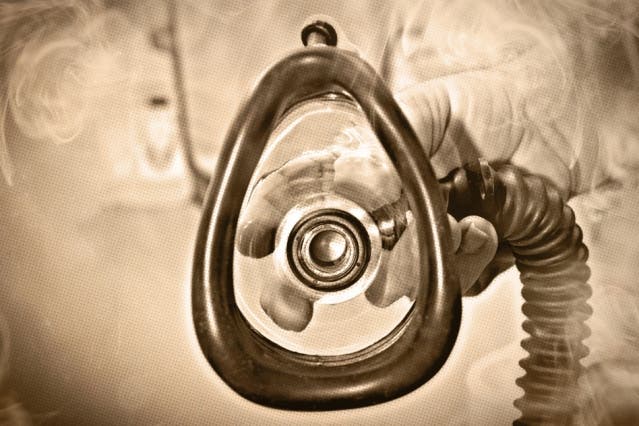Nitrous oxide, commonly known as laughing gas, is a simple chemical composed of two nitrogen atoms and one oxygen atom (N2O). Despite being used as an anesthetic since the 1800s, the effects it has on the brain are not well understood. In a new study published in this week in Clinical Neurophysiology, MIT researchers reveal some key brainwave changes caused by the gas.

Nitrous oxide was used for anaesthesia in dentistry since December 1844, where Horace Wells made the first 12–15 dental operations with the gas in Hartford. It made its official debut as an anesthetic in 1863, when Gardner Colton introduced it at his private company. But even after all these years of use, we still don’t know exactly what it does to us – and researchers wanted to fix that. They found that nitrous oxide does things to our brain that no other drug does.
For three minutes after administration, electroencephalogram (EEG) recordings show large-amplitude slow-delta waves, which are usually associated with the deep stage 3 of NREM sleep. But the waves caused by the laughing gas were twice as large in amplitude, and more powerful, than the ones we see in slumber. It’s not clear why these waves last only three minutes and then go away.
“We literally watched it and marveled, because it was totally unexpected,” says Emery Brown, the Edward Hood Taplin Professor of Medical Engineering at MIT and an anesthesiologist at Massachusetts General Hospital (MGH). “Nitrous oxide has control over the brain in ways no other drug does.”
The thing is, even though doctors often explain anesthesia as “putting someone to sleep”, it’s actually nothing like sleep – it’s just a metaphor to explain the closest experience. Anesthesia is more like a drug-induced coma, which sounds much more terrifying; the patient is unconscious, feels no pain and doesn’t move, but is mentally stable. This state of coma remains as long as the flow of drugs is maintained and patients awake without feeling that time has passed.
Laughing gas is a weak anesthetic, generally administered towards the end of the surgery, to keep a patient unconscious while more potent ether anesthetics are eliminated from the body. Understanding the exact effects of the substance on the human body could be very useful in countless medical procedures.
Brown and his team are now systematically studying the EEG signatures signatures of other commonly used anesthetics and anesthetic combinations.






